When Evolution Runs Backwards IELTS Reading Answers
2 min read
Updated On
-
Copy link
Table of Contents

Limited-Time Offer : Access a FREE 10-Day IELTS Study Plan!
The Academic passage ‘When Evolution Runs’ is a reading passage that appeared in an IELTS Test.
It contains some of the IELTS reading question types. If you are interested in familiarising yourself with all the question types, don’t hesitate to take an IELTS reading practice test
When Evolution Runs Backwards
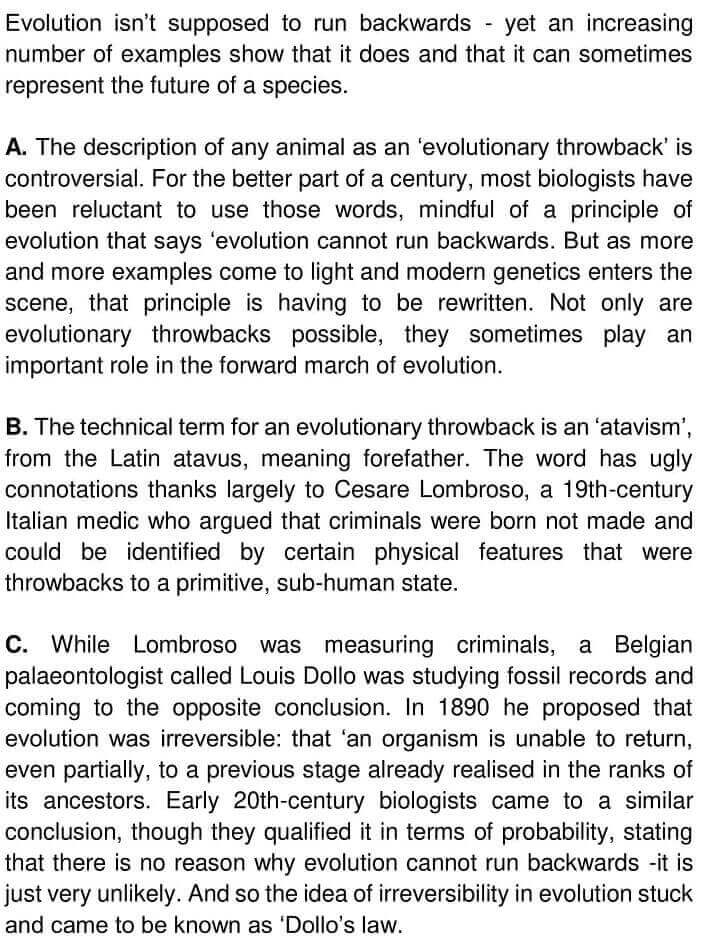
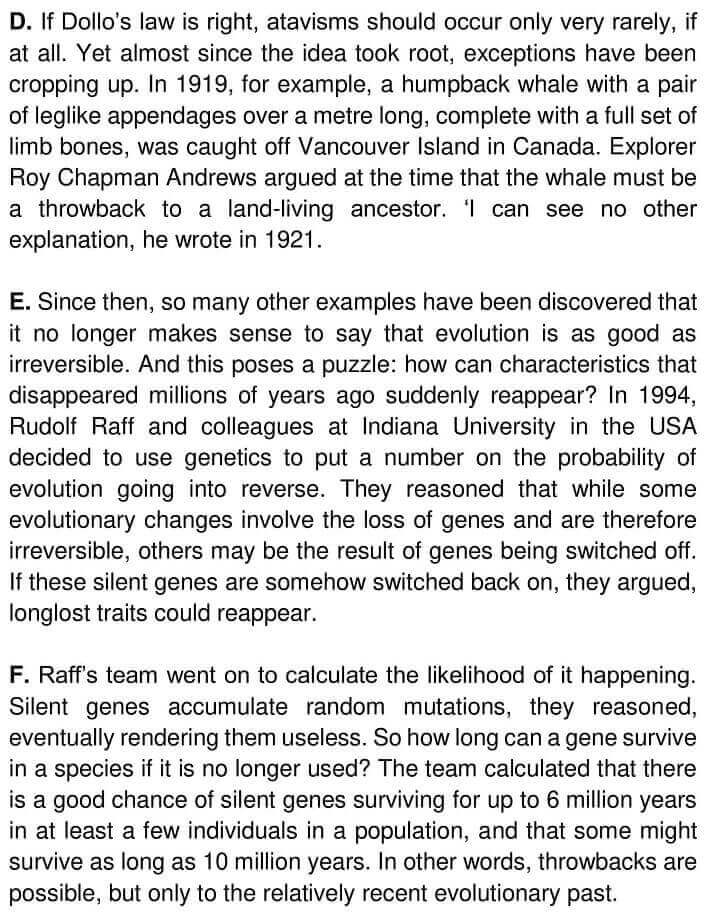
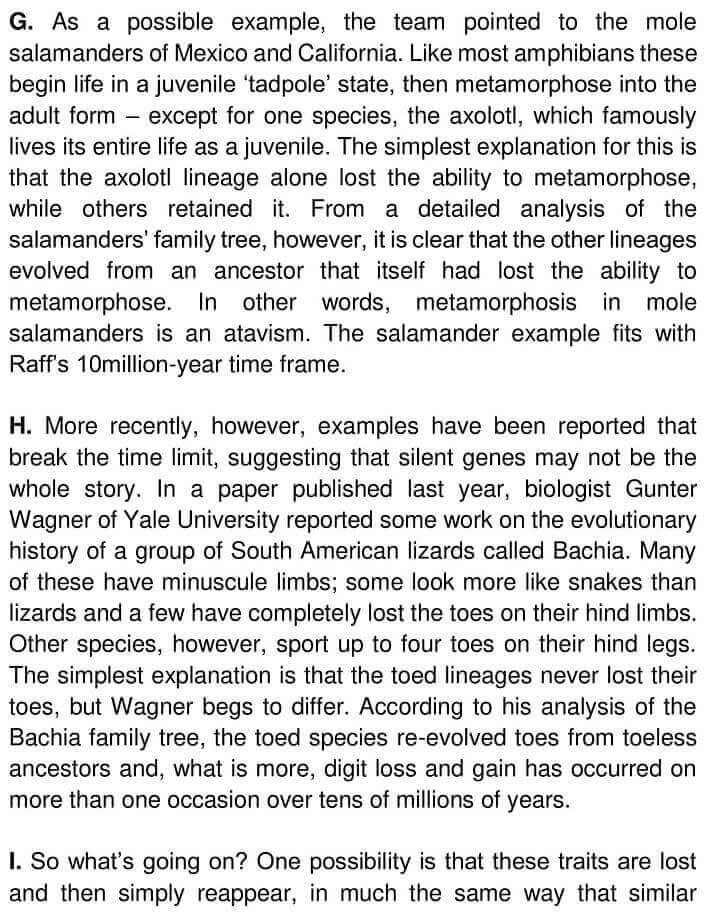
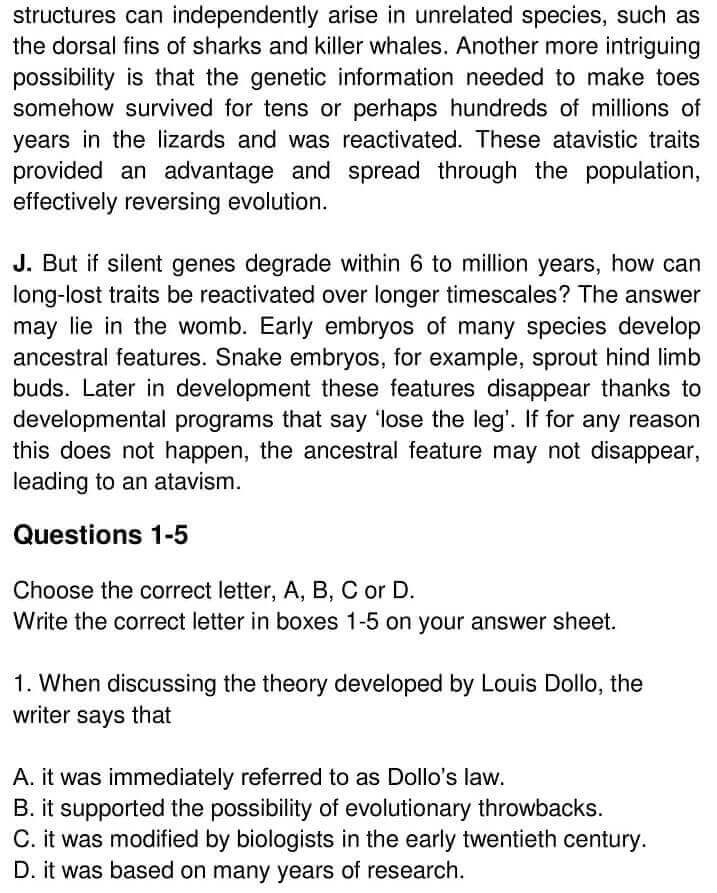
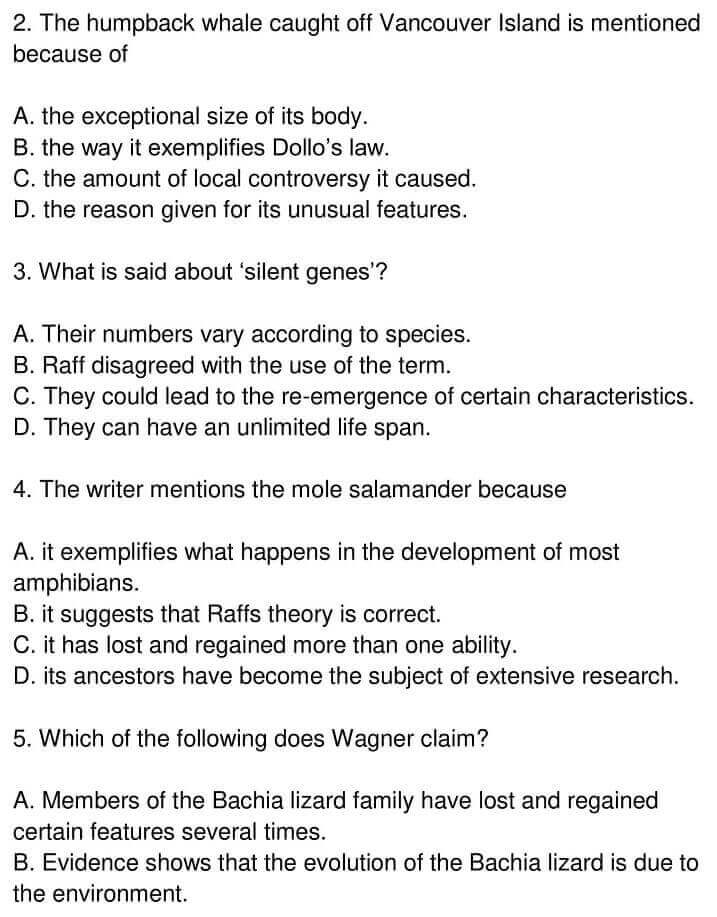
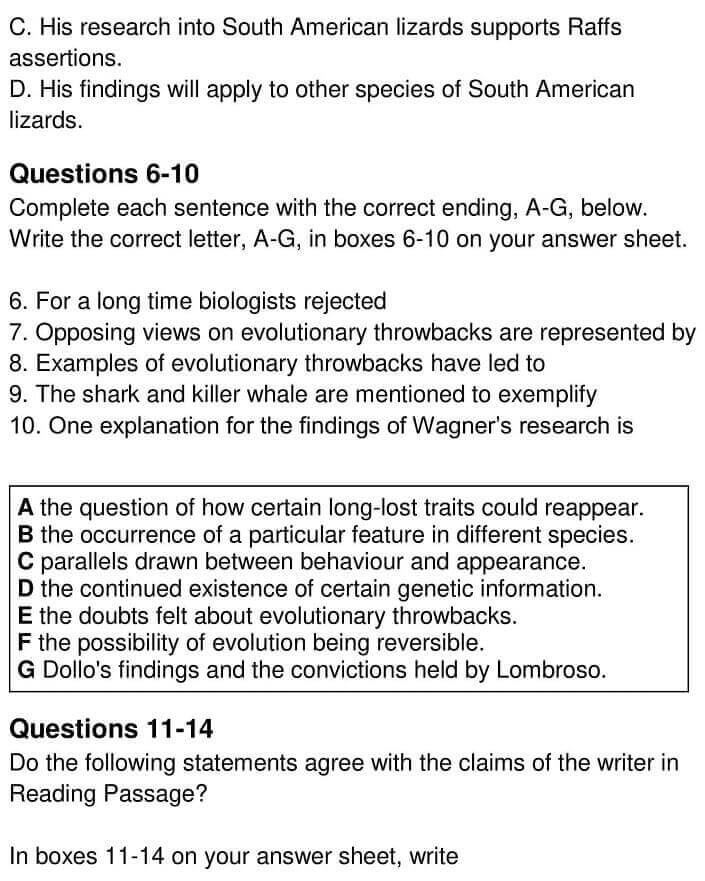
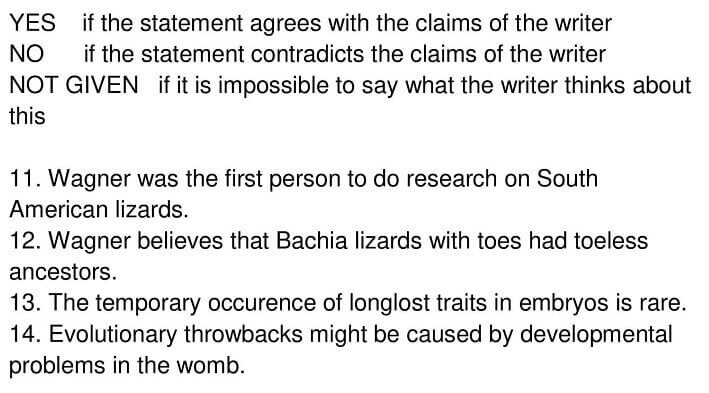
Answers
Unlock Answers
| Question number | Answer | Keywords | Location of keywords |
|---|---|---|---|
| 1 | C | Early 20th-century biologists came to a similar conclusion, though they qualified it in terms of probability, stating that there is no reason why evolution cannot run backwards -it is just very unlikely | Paragraph C;
Line 3 |
| 2 | D | Explorer Roy Chapman Andrews argued at the time that the whale must be a throwback to a land-living ancestor. | Paragraph D;
Line 4 |
| 3 | C | If these silent genes are somehow switched back on, they argued, longlost traits could reappear. | Paragraph E;
Last line |
| 4 | B | The salamander example fits with Raff’s 10million-year time frame. | Paragraph G;
Last line |
| 5 | A | According to his analysis of the Bachia family tree, the toed species re-evolved toes from toeless ancestors and, what is more, digit loss and gain has occurred on more than one occasion over tens of millions of years. | Paragraph H;
Last line |
| 6 | F | For the better part of a century, most biologists have been reluctant to use those words, mindful of a principle of evolution that says ‘evolution cannot run backwards | Paragraph A;
Line 2 |
| 7 | G | While Lombroso was measuring criminals, a Belgian palaeontologist called Louis Dollo was studying fossil records and coming to the opposite conclusion | Paragraph C;
Line 1 |
| 8 | A | so many other examples have been discovered that it no longer makes sense to say that evolution is as good as irreversible. | Paragraph E;
Line 1 |
| 9 | B | similar structures can independently arise in unrelated species, such as the dorsal fins of sharks and killer whales. | Paragraph I;
Line 2 |
| 10 | D | Another more intriguing possibility is that the genetic information needed to make toes somehow survived for tens or perhaps hundreds of millions of years in the lizards and was reactivated. | Paragraph I;
Line 3 |
| 11 | NOT GIVEN | – | – |
| 12 | YES | the toed species re-evolved toes from toeless ancestors and, what is more, digit loss and gain has occurred on more than one occasion over tens of millions of years. | Paragraph H;
Last line |
| 13 | NO | Early embryos of many species develop ancestral features. | Paragraph J;
Line 3 |
| 14 | YES | The answer may lie in the womb. | Paragraph J;
Line 2 |
Check More IELTS Reading Answers
Also check :
Practice IELTS Reading based on question types

Start Preparing for IELTS: Get Your 10-Day Study Plan Today!
Recent Articles

Nehasri Ravishenbagam

Haniya Yashfeen

Haniya Yashfeen

Haniya Yashfeen
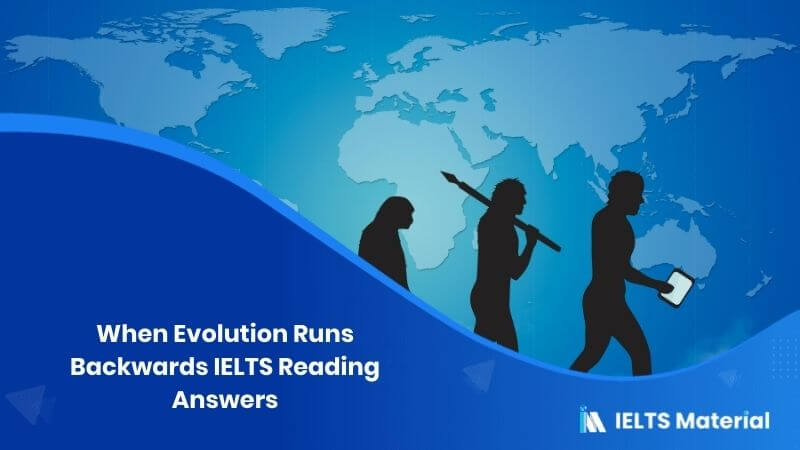



Post your Comments